BRP TFA – Anti-Obesity Research Peptide
原价为:$20.00。$18.00当前价格为:$18.00。
BRP TFA is a high-purity synthetic peptide derived from BRINP2-related sequences. It demonstrates potent anti-obesity effects through FOS activation in the central nervous system, independently of leptin, GLP-1 receptor, or melanocortin 4 receptor pathways. Manufactured in a GMP-certified facility, BRP TFA is intended for laboratory research use only. Available for wholesale and retail.?If you need to place an order or inquire about wholesale product prices, specifications and uses, please contact our staff?
描述
BRP TFA (BRINP2-related peptide trifluoroacetate) is a synthetic peptide developed for research in metabolic regulation and obesity. BRP belongs to the BRINP2 family of peptides, which have been implicated in energy homeostasis and neuronal activity. Unlike classical anti-obesity agents that rely on leptin signaling, GLP-1 receptor activation, or melanocortin 4 receptor (MC4R) pathways, BRP TFA functions via central activation of FOS, a transcription factor critical for neuronal signaling and metabolic control.
In preclinical research, BRP TFA has demonstrated potent anti-obesity activity by modulating feeding behavior, energy expenditure, and central neuronal circuits associated with appetite regulation. The peptide’s unique mechanism allows it to bypass traditional metabolic hormone pathways, making it a promising tool for dissecting leptin-independent and MC4R-independent mechanisms of energy balance.
BRP TFA is supplied as a lyophilized TFA salt, which enhances peptide stability and water solubility. This form ensures long-term storage without significant loss of bioactivity, supporting reliable laboratory experimentation. The peptide can be reconstituted in aqueous buffers compatible with in vitro or in vivo studies.
Laboratory studies using BRP TFA focus on:
-
Central nervous system activity: Investigating neuronal activation via FOS expression in hypothalamic and cortical regions.
-
Anti-obesity mechanisms: Examining how BRP modulates appetite, energy expenditure, and lipid metabolism independently of classical satiety signals.
-
Peptide pharmacology: Determining dose-response relationships, pharmacokinetics, and stability in preclinical models.
-
Metabolic disorder research: Studying effects on obesity, insulin sensitivity, and hepatic lipid accumulation in diet-induced obese animal models.
The peptide’s specificity for central FOS activation makes it a valuable tool for mechanistic studies in obesity research. Researchers can use BRP TFA to map neuronal circuits, identify downstream target genes, and evaluate potential combinatorial therapies with other anti-obesity agents.
Produced in a GMP-certified facility, BRP TFA ensures reproducibility and high purity suitable for rigorous experimental protocols. The peptide is available for wholesale and retail supply, facilitating preclinical studies, screening assays, and peptide-based experimental therapeutics research.
BRP TFA is strictly for laboratory research use and is not intended for human administration. Its high purity and standardized production allow precise control over dosing and experimental conditions, supporting detailed investigations into energy homeostasis, neuronal regulation of appetite, and anti-obesity pharmacology.
Product Specifications
| Parameter | Details |
|---|---|
| Product Name | BRP TFA (BRINP2-related peptide TFA) |
| Synonyms | BRINP2 peptide TFA, BRP peptide |
| CAS Number | Not assigned, synthetic GMP peptide |
| Molecular Type | Synthetic peptide |
| Purity | >95% (HPLC) |
| Appearance | Lyophilized white to off-white powder |
| Molecular Formula | Peptide sequence derived from BRINP2 |
| Storage Conditions | Store at -20°C, protect from moisture and light |
| Solubility | Soluble in aqueous buffers, DMSO |
| Stability | Stable in TFA salt form under inert atmosphere |
| GMP Compliance | Produced in GMP-certified facility |
| Applications | Laboratory research in obesity, FOS activation, CNS peptide pharmacology |
| Availability | Wholesale & retail supply |
This peptide is compatible with in vitro neuronal assays, preclinical animal studies, and combinatorial experiments exploring obesity, energy balance, or metabolic disorders. Its GMP-grade quality ensures reproducible results in advanced research settings.
Mechanism of Action & Research Applications
BRP TFA functions through activation of FOS, a transcription factor rapidly induced in neurons in response to various stimuli. FOS regulates downstream genes involved in synaptic activity, neuronal plasticity, and energy homeostasis. In preclinical research, BRP TFA administration induces robust neuronal FOS expression in hypothalamic and cortical regions associated with appetite control.
Unlike traditional anti-obesity agents, BRP TFA does not require leptin, GLP-1 receptor, or MC4R signaling, providing a unique tool to study alternative regulatory pathways. This independence allows researchers to investigate metabolic regulation in leptin-resistant or receptor-deficient animal models.
Key research applications include:
-
Obesity and energy homeostasis studies: Evaluating how BRP TFA modulates food intake, body weight, and lipid metabolism independently of canonical pathways.
-
Neuronal activation mapping: Using FOS immunostaining to identify peptide-responsive brain regions.
-
Metabolic disorder modeling: Investigating the peptide’s effects on diet-induced obesity, non-alcoholic fatty liver disease (NAFLD), and insulin resistance.
-
Combination studies: Examining synergistic effects with other anti-obesity agents, including GLP-1 receptor agonists or melanocortin analogs.
-
Peptide pharmacology and stability studies: Assessing pharmacokinetics, dose-response, and CNS penetration in preclinical models.
BRP TFA is highly suitable for in vitro and in vivo research due to its stability, reproducibility, and central activity profile. Researchers can use it to explore neuronal gene expression, FOS-dependent transcriptional programs, and appetite-suppressing mechanisms that operate independently of leptin or classical satiety signaling.
In addition, BRP TFA can serve as a tool compound for discovering novel anti-obesity targets, understanding peptide-mediated CNS signaling, and developing next-generation metabolic therapeutics. Its unique mechanism provides insights into alternative pathways for controlling body weight and energy balance, which are critical in obesity research.
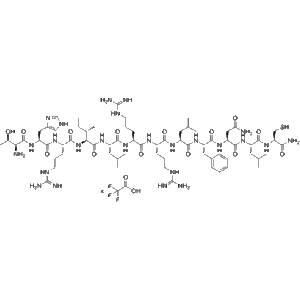
Side Effects (For Reference in Models)
BRP TFA is intended strictly for laboratory research use. Potential side effects are primarily observed in preclinical experimental settings and are associated with its potent neuronal activity.
-
Central nervous system effects: Excessive dosing may lead to transient hyperactivation of neurons, measured by elevated FOS expression or changes in neurotransmitter levels.
-
Behavioral changes in animal models: High doses could affect locomotor activity, feeding behavior, or stress responses in experimental animals.
-
Experimental variability: Differences in CNS receptor expression, species, and metabolic state can affect peptide responsiveness.
-
Immune activation: Though minimal, some peptides may elicit mild immune responses in vivo depending on experimental model and dosage.
No side effects are documented for non-target cells in in vitro studies when used under standard laboratory conditions. Handling precautions, including personal protective equipment (PPE) and sterile technique, are recommended to avoid accidental exposure.
Strict adherence to dosing guidelines and institutional protocols ensures safety and reliable experimental outcomes. BRP TFA is not intended for human use, and all in vivo or in vitro experiments must follow ethical and biosafety standards.
Disclaimer
BRP TFA is supplied for laboratory research use only. It is not intended for human or clinical use. All experiments must be conducted by trained personnel in controlled laboratory conditions.
Keywords
其他信息
| 重量 | 0.8 公斤 |
|---|---|
| 尺寸 | 63 × 53 × 63 厘米 |
BRP TFA is a synthetic peptide derived from BRINP2, used in laboratory research to study anti-obesity mechanisms through FOS activation.
It activates FOS in the central nervous system, independently of leptin, GLP-1 receptor, or MC4R pathways.
Yes, it is suitable for preclinical obesity and metabolic studies in rodents.
95% HPLC-purified, GMP-grade peptide.
Store at -20°C, protected from moisture and light, avoiding repeated freeze-thaw cycles.
No, its activity is central and typically requires administration suitable for CNS studies.
Yes, it can be combined with GLP-1 receptor agonists or other metabolic modulators for research purposes.
Yes, it can be used in neuronal cultures or CNS cell line studies to evaluate FOS activation.
High doses may transiently affect feeding behavior, locomotion, or neuronal activity, but effects are generally reversible.
No, it is strictly for laboratory research purposes.




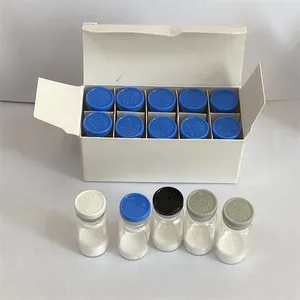




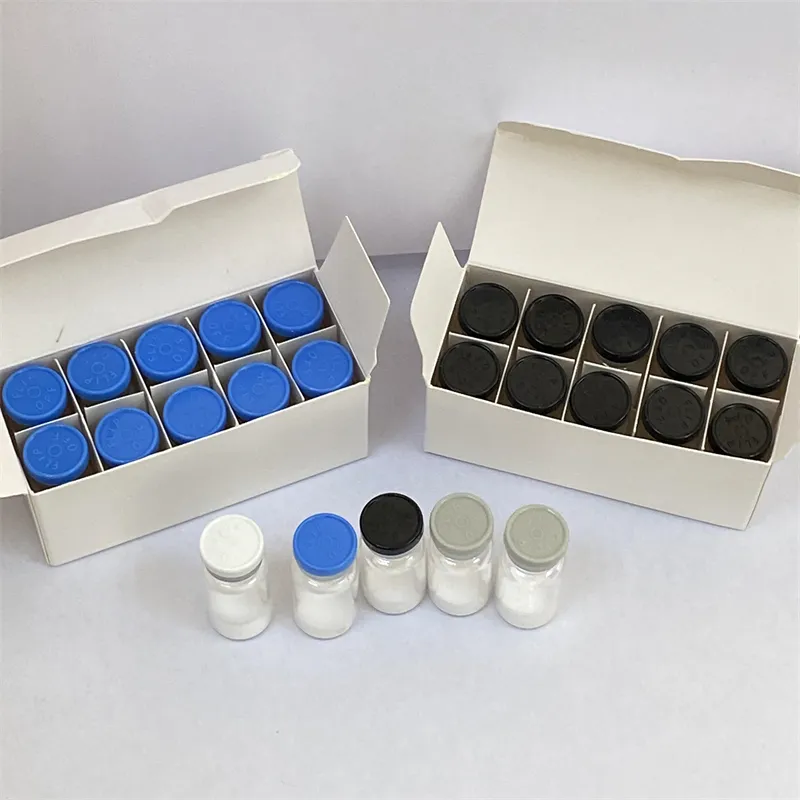
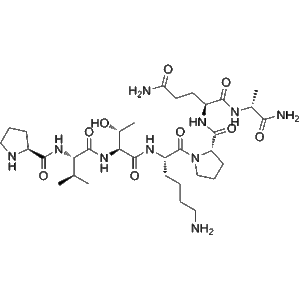

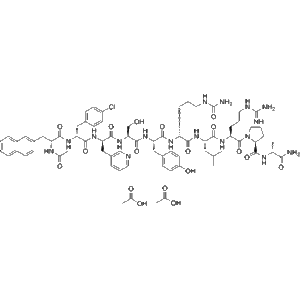


评价
目前还没有评价